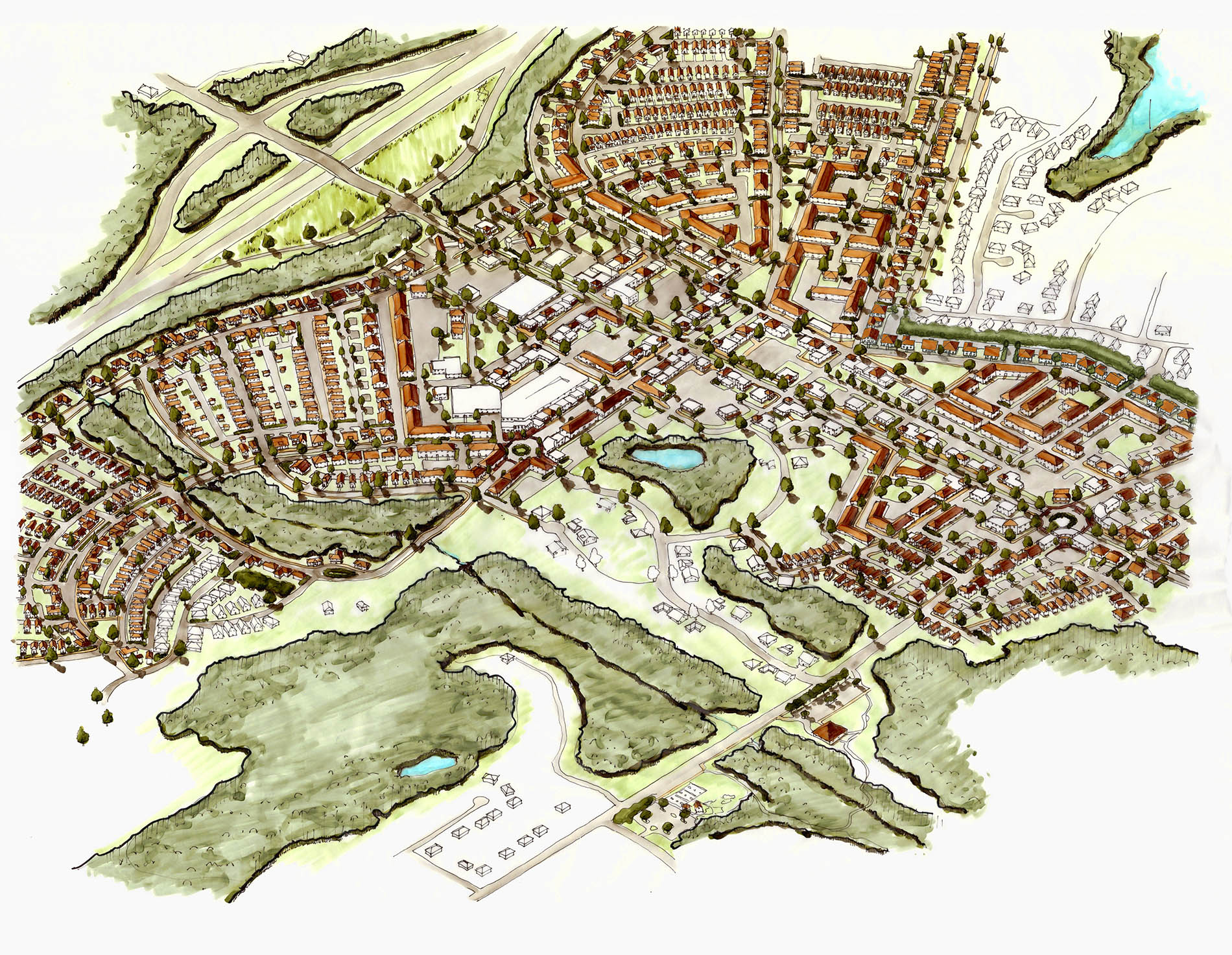A Delicate Balance
Destination by Design worked with the town of Stallings, NC to develop small area plans to better prepare the town for future growth and development. When most people think of Charlotte, NC they don’t think of small town living. After all, this booming Southern city anchors one of the fastest growing areas of the country. With this growth comes challenges, however, such as the traffic and urban sprawl that seem to now define this metro.
While Charlotte’s gridlock and sprawling neighborhoods are a growing challenge for the city’s leaders, the stark reality is that the smaller municipalities that dot the Queen City’s perimeter are in many ways feeling the brunt of these community development challenges. Stallings, NC is one such community.

Small Area Plan Study Areas
Monroe Bypass Corridor
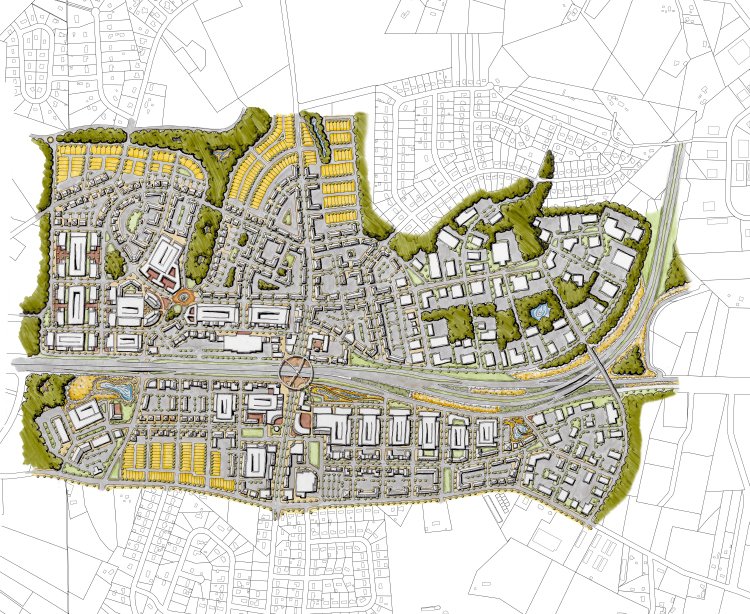
Stallings Elementary School Node
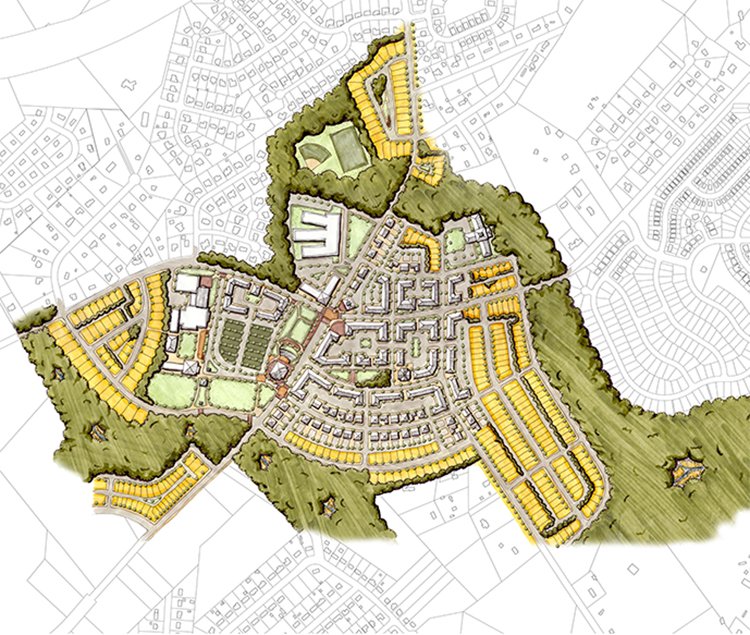
Idlewild Road Corridor

A Pivotal Crossroads
Located on Charlotte’s doorstep, this small municipality of about 15,000 people isn’t having any difficulty in attracting new residents like many of its small and mid-sized peer cities across the country. And while steady population growth is a good thing for most any community, the kind of transformational growth expected to come to Stallings in coming decades is daunting.
Charlotte’s growth has changed Stallings – that much is for certain. The cranes that dominate the skyline of Stallings’ well-known neighbor and the congestion along US-74 – the metro’s prime thoroughfare – are a reminder that change is here to stay. Stallings’ future, however, will likely depend on how well it can change itself, and seize control of its own destiny in the process. Thankfully, the town’s leaders are up to the challenge.
The challenge, that is, of being deliberate and thoughtful in planning for a period of transformational growth, while still maintaining a high quality of life for town residents. Stallings’ future will resemble something of a high wire balancing act, as the town weighs the appeal of big city amenities with the desire to retain some semblance of suburban charm.
Thankfully, the DbD team is experienced in such performances, and our professional know-how – if not acrobatic skills – helped to set Stallings on the right path.
1. How can we assure growth occurs in such a way that maintains a high quality of life and good urban form into the future?
2. Can we foster a development strategy that promotes walkability and culture?
3. Can we develop a transportation network that is well-connected and still allows for a unique sense of place?4. How do we increase density without undermining the single-family model?
The Process Begins with a Vision.
We created a 50-year buildout of an urban design for the town. In order to protect the existing single-family neighborhoods, we implemented transitional areas and green spaces, including transitional housing types, such as town homes and mansion flats, that help to increase density without compromising existing neighborhoods.
Working collaboratively with town leaders, DbD developed a vision for the town that highlighted the many benefits of density. Density increases tax revenue, improves walkability, and creates cohesive and connected communities, unfragmented by traditional auto-centric development.
This new vision for Stallings, will allow for cultural centers and walkable commercial areas without compromising the existing neighborhoods in the area. The improved density will ultimately result in a more cohesive, connected, and vibrant community.
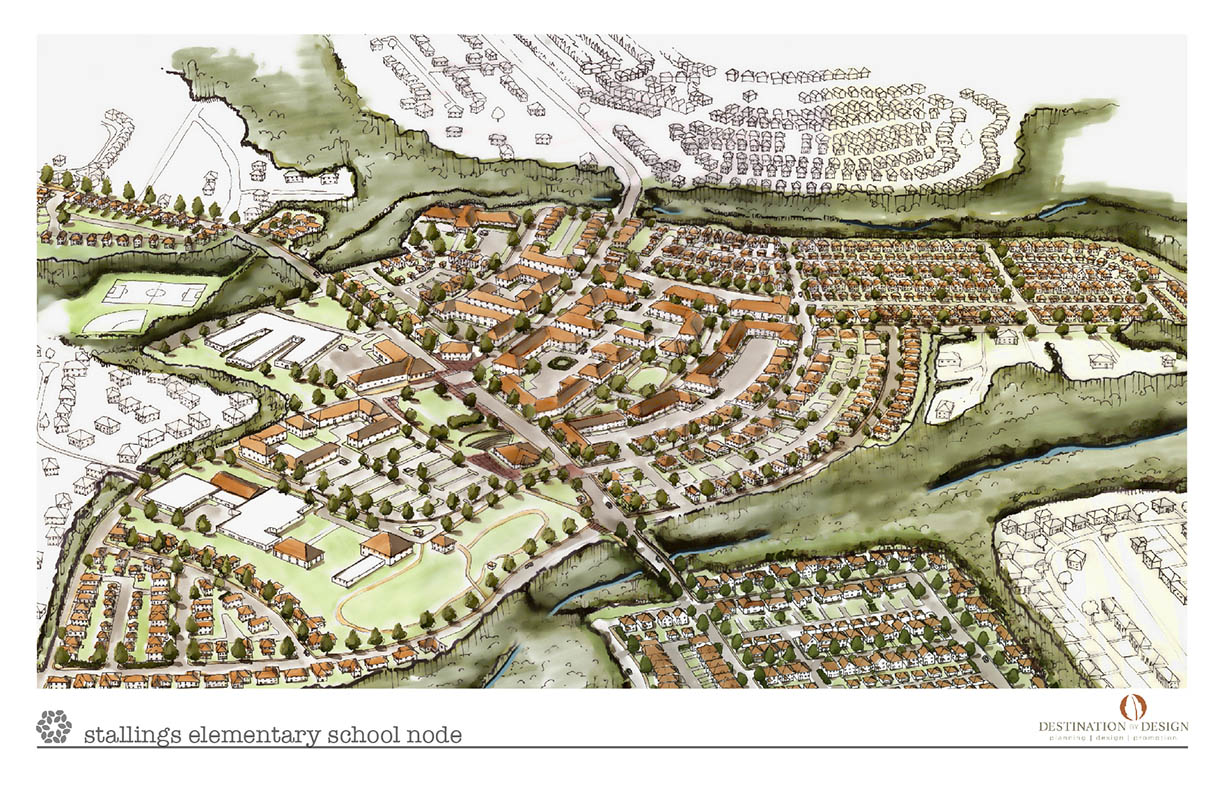
Striking the right balance.
The team at DbD worked with Stallings to help the town strike the right balance between both suburban and urban development models. Instead of shying away from the challenge that their projected growth posed for their community, town leaders embraced the opportunity to collaborate with DbD and create a more dynamic place to live, work, and play.
The DbD team made the case for a holistic approach to community planning that was far-sighted in its scope and objectives, yet cognizant of current realities that will shape the town’s future.
Before being introduced to the DbD team, the town’s political climate once favored the type of low-density housing that urban planning purists bemoan. Such a model for development would significantly hamper livability standards over the long-term for a community expecting the kind of growth that Stallings saw on its horizon.
DbD highlighted the benefits of increasing density, improving walkability, and embracing other tenets of smart growth. The professional guidance offered by the DbD team ultimately will help Stallings pave the way for an improved quality of life for the town’s residents of both today and tomorrow.
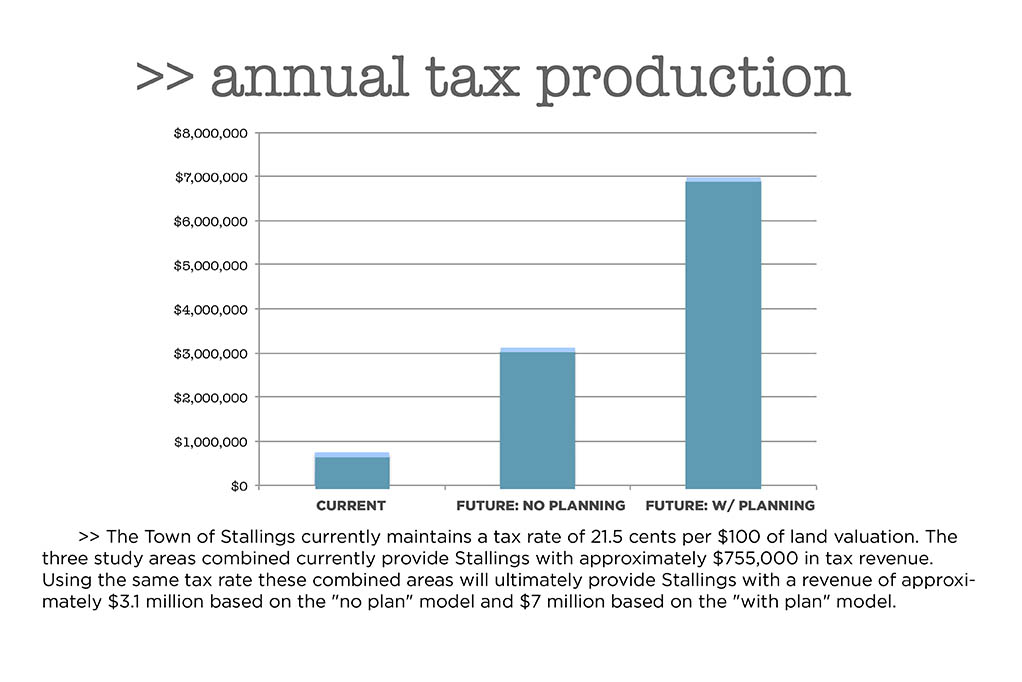

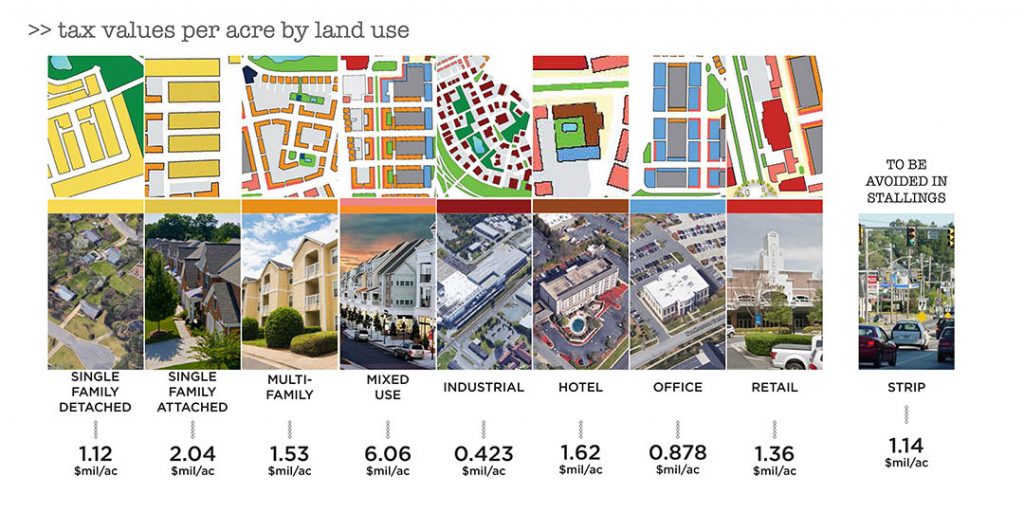
Planning is collaborative, and achieving compromise is crucial to success.
It can be challenging to convey the full implications of how single-family housing consumes land and resources, eventually resulting in a negative return in tax value. Our innovative tax base analysis solution helped convey the benefits of higher density to the town’s leaders, and resulted in a greater willingness to adopt a more diverse urban form. By crafting new perspectives, DbD helps discover points of compromise, allowing communities like Stallings to grow in smart and sustainable ways without undermining existing residential areas.
No Planning
Traditional strip commercial development results in a low tax value per acre when compared to mixed-use and walkable neighborhoods. In addition, without strategically locating multi-family housing, Stallings will maintain a risky dependency on low tax value per acre single-family properties for revenue; this approach guarantees higher taxes in the long run to provide civic and municipal services and recreational amenities.
Planning
With strategically placed mixed-use centers that are appropriately buffered from existing neighborhoods, Stallings can create high tax value per acre “spikes” to subsidize low tax revenue residential neighborhoods. This approach will mitigate against sharp tax increases to fund and improve quality of life and maintain public resources and amenities.


